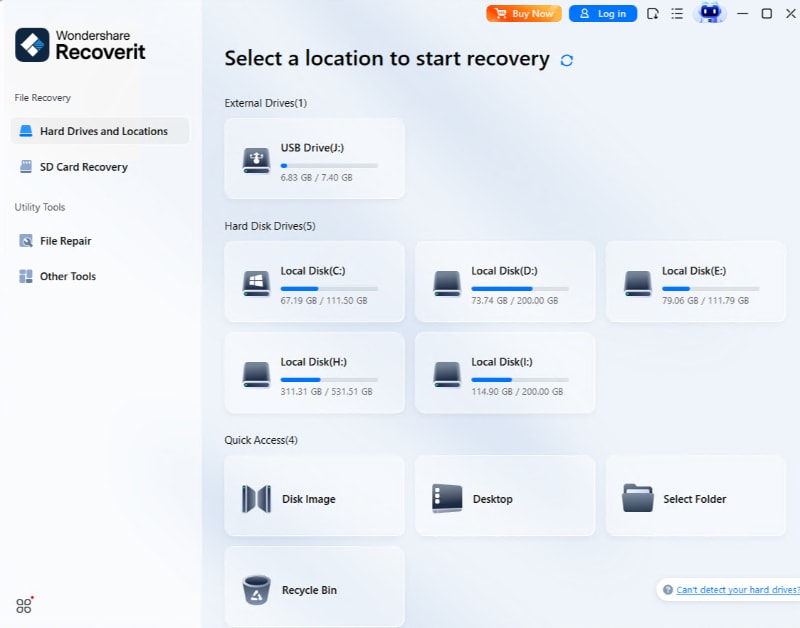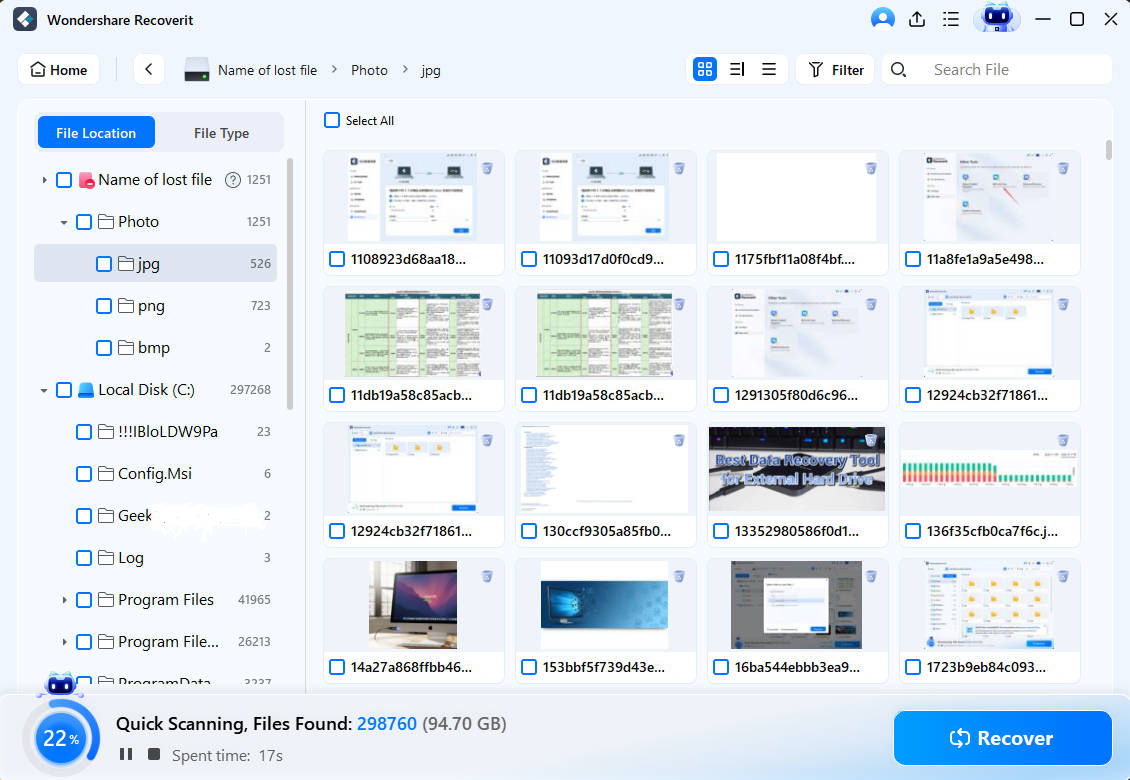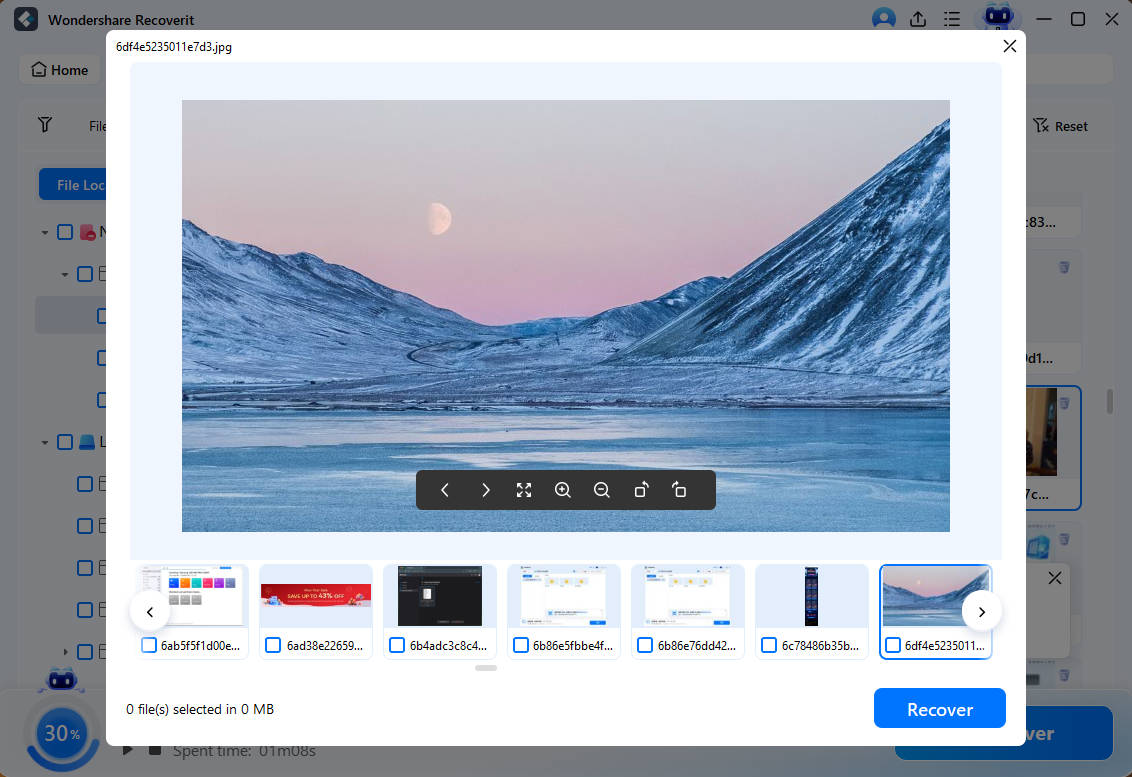Truly, Steam is a great gaming platform and having the platform start every time your PC powers on can be irritating for users who are trying to conserve their system resources. Many users try to refrain from the option so they can reduce their boot time and put an end to background processes. To answer the question of how to stop Steam from opening on startup, just disable it from within the Steam client, or in your computer's system settings.
Try Recoverit to Perform Data Recovery

In this article
Easily Retrieve Your Lost/Deleted Game Files!

How to Stop Steam from Opening on PC Startup?
Having Steam running automatically on startup can either slow down a PC or hog unnecessary resources. To fasten booting and decide which apps run at startup, there are quick methods to stop Steam from opening on startup.
| Method | Definition | Impact |
|---|---|---|
| Task Manager (Startup Apps) | Disable Steam's startup entry directly through Windows' Task Manager. | Prevents Steam from launching during the initial Windows boot process. |
| Steam Settings (Interface) | Modifies Steam's internal settings to prevent automatic startup. | Prevents Steam from initiating itself upon Windows login through its own configuration. |
| Windows Settings (Startup Apps) | Utilizes the Windows Settings app to manage startup applications, including Steam. | Broadly controls which programs launch at startup, affecting Steam's automatic launch. |
| Task Scheduler | Modified or deleted scheduled tasks related to Steam's startup. | Prevents Steam from launching based on scheduled events, offering more granular control. |
| Registry Editor | Directly edits Windows Registry entries related to startup applications, including Steam. | Alters the system's core startup behavior, requiring caution but offering direct control. |
1. Stop Steam from Opening on Startup in Task Manager
Starting Steam automatically could slow down a computer's performance and consume some system resources. Check out these simple steps to find out how to stop Steam from running in the background and improve the performance of your computer while starting.
Step 1: Open Task Manager
Press Ctrl + Shift + Esc on your keyboard to open Task Manager. You can also right - click on the taskbar and select Task Manager from the menu.
Step 2: Go to the Startup Tab
In Task Manager, click on the Startup tab. This will show a list of programs that automatically launch when your computer starts.
Step 3: Disable Steam
Find Steam in the list, click on it to select it, and then hit the Disable button at the bottom right. This prevents Steam from opening automatically when you start your PC.

Now, Steam will only run when you open it manually.
2. Disable Steam on Startup via Steam Settings
Contemporary Steam's automated launching feature can cause delays during startup and waste system resource usage. But, this could be avoided to disable steam startup using its built - in settings. This guarantees Steam will run only upon opening at the user's request for better control of system performance. Here are the easy steps to stop Steam from starting up automatically and make it speedier at startup.
Step 1: Open Steam
Launch the Steam client on your Windows 11 or Windows 10 PC. Ensure you are signed in to access the settings.
Step 2: Go to Steam Settings
Click on Steam in the upper - left corner of the window, then select Settings from the dropdown menu. This will open the Steam settings window.
Step 3: Navigate to Interface Settings
On the left side of the settings window, click on Interface to find options related to Steam's appearance and behaviour.

Step 4: Disable Auto - Launch
Find the option "Run Steam when my computer starts" and toggle it off. This will prevent Steam from opening automatically when you start your PC.
Once done, close the settings window, and Steam will only run when you manually open it.
3. Stop Steam from Launching on PC Startup via Windows Settings
Disabling the Steam auto - launch feature would be one thing every user should administer to keep speed and resource utilization under control. Do you want to take back control of the boot process from Steam? Then read on to turn off steam auto launch in Windows Settings. It is a simple method of switching off startup applications without ever having to open Steam.
Step 1: Open Windows Settings
Press Win + I on your keyboard to open the Settings menu. This is where you can manage system preferences, including startup programs.
Step 2: Navigate to Startup Apps
In the Settings window, click on Apps, then select Startup from the left - hand menu. This will display a list of all programs that launch when your computer starts.
Step 3: Disable Steam Auto - Launch
Find Steam in the list of startup apps. Click the toggle switch next to it to turn it Off. This stops Steam from automatically launching every time you start your PC.

Now, Steam will only open when you manually launch it, helping improve your computer's startup speed.
4. Stop Steam from Starting Automatically on Startup Using Task Scheduler
The appearance of Steam in the startup has a proclivity for making the system slower and consuming unnecessary resources. By using Task Scheduler, you will be able to have more control over your startup processes especially to stop Steam opening on startup Mac or Windows. This prevents Steam from automatically running when you need it. This article looks into how you can stop Steam's auto - launch to optimize your system performance during startup.
Step 1: Open the Run Dialog Box
Press Win + R on your keyboard to open the Run dialog box. This tool allows you to quickly access system utilities.
Step 2: Open Task Scheduler
In the Run box, type taskschd.msc and click OK. This will open Task Scheduler, where you can manage scheduled tasks on your computer.

Step 3: Disable Steam Startup Task
On the left pane, expand the Task Scheduler Library to see a list of tasks. Find Steam, select it, and click Disable to stop it from launching automatically.
You can still open it manually whenever you need it.
5. Stop Steam from Running on Startup via Registry Editor
Steam Launching on startup takes your computer very slow and consumes unnecessary resources. The advanced method of stopping it is by using the Windows Registry Editor. Changing its registry entries may completely stop Steam from auto - starting. Knowing how to stop Steam from opening on startup using this method gives you more control over your system. Follow these steps meticulously to disable Steam's auto launch through the Registry Editor.
Step 1: Open Registry Editor
Click on the Windows search box, type regedit, and press Enter. This will open the Registry Editor, where you can manage system settings.
Step 2: Navigate to the Startup Registry Key
In the Registry Editor, go to the following path:
Computer\HKEY_CURRENT_USER\SOFTWARE\Microsoft\Windows\CurrentVersion\Run
This folder contains startup programs that run when your computer starts.
Step 3: Delete the Steam Entry
Find the Steam entry in the list, right - click it, and select Delete. Confirm the action to remove Steam from startup.

Now, Steam will no longer launch automatically when you start your PC. Be cautious when editing the registry to avoid unintended changes.
Recover Important Steam Data on Computer: Instant Recovery
It's frustrating to lose valuable Steam data like game files, screenshots, and saved settings, whether due to accidental deletions, system crashes, or random errors. Gamers are desperate to regain their lost data, and Wondershare Recoverit is a worthwhile tool that quickly and efficiently retrieves minus files or deleted files. All types of file formats are available for retrieving; they also include game data, images, videos, and documents.
In addition to managing your system's startup settings so that it will not stop Steam from opening on startup applications, you will also want to have some form of recovery solution at your disposal. Wondershare Recoverit provides a very safe and simple interface that facilitates the recovery of Steam - related files from either internal or external storage devices.
Step 1: Select the Location
Open Wondershare Recoverit and choose the location where your Steam data was deleted. This could be your C: drive, an external hard disk, or another storage device. Click the Start button to begin scanning for lost files.

Step 2: Scan and Preview Files
Recoverit will scan the selected location to search for deleted Steam files, including game data, screenshots, and saved settings. The scanning process may take a few minutes. While it runs, you can preview recoverable files to check if your lost data is found.

Step 3: Recover Lost Data
Once the scan is complete, select the files you want to restore. Click the Recover button, then choose a safe location (not the original drive) to save the recovered data. Now, your important Steam files are restored, and you can access them again.

Conclusion
Controlling Steam is vital in ensuring a system's enhanced performance and booting speed. This can be achieved through the use of Task Manager, Steam settings, Windows Settings, Task Scheduler, or the Registry Editor. Thus, it would be quite simple to disable Steam from running in the background and wasting unnecessary resources. Besides, in case any valuable game data is lost, applications such as Wondershare Recoverit may provide some help to recover deleted files conveniently. By performing the steps mentioned above, you will be in complete command of Steam's behavior for a better PC experience.
FAQ
-
1. How do I stop Steam from popping up on Windows?
To prevent Steam from running at startup, navigate to Steam> Settings > Interface and uncheck "Run Steam when my computer starts." You can also disable it under the Task Manager's Startup tab. -
2. How do I stop Steam from automatically logging in?
Go to the Account tab in Steam Settings and uncheck "Don't save account credentials on this computer." This disables automatic login and requires you to input your password each time you launch Steam. -
3. How to get Steam to open on startup?
Launch Steam, select Settings, then the Interface tab, and check the box next to Run Steam when my computer starts to enable auto - start settings for Steam. You can enable it via Task Manager as well by selecting Steam in Startup and choosing Enable.




 ChatGPT
ChatGPT
 Perplexity
Perplexity
 Google AI Mode
Google AI Mode
 Grok
Grok























